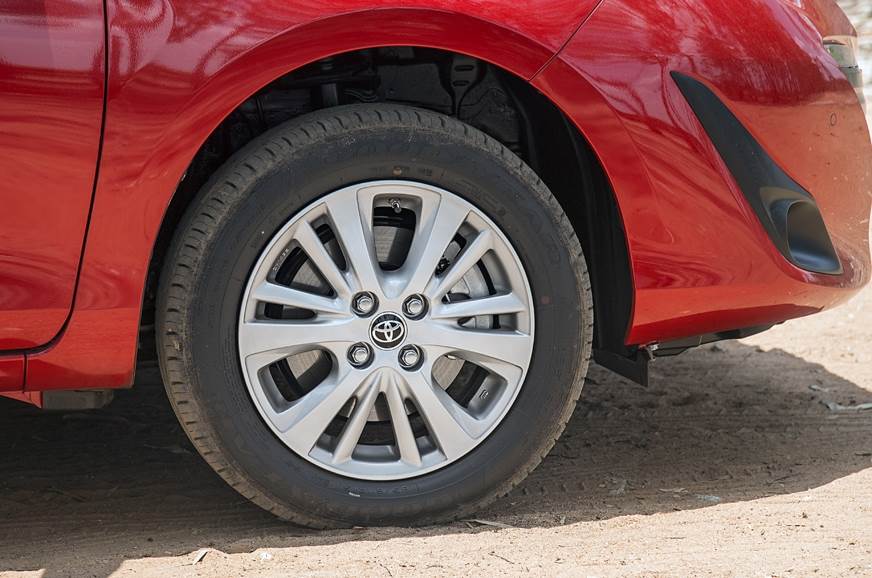Is Toyota’s late entry going to affect the Yaris?
I recently got a chance to test drive the Yaris that was
launched on April 25th, now when I mention that I got a chance to
test drive the car I mean to say that I was the passenger and my dad was
driving. The car we test drove was the 1.5 cvt in V spec, which is one model below the VX.
What segment is it positioned in or which cars does it
compete with?
The Yaris competes with cars like the Hyundai Verna, Honda
City, Skoda Rapid, Volkswagen Vento and the last one that is the Maruti Ciaz.
When compared it is not ahead of all its competitors but it has a lot of
features that are practical. Notice how I mentioned the Ciaz at last, that’s
because it has nothing to bring it even close to the Yaris, now having said
that it is a good attempt from Maruti’s side. The Yaris has the right amount of
features to give the City a run for its money same case with the Verna. The
talking point here is the standard safety features offered, 7 air-bags standard
with ABS, and EBD. The car has AC vents
even at the rear although it may look out of place, I can definitely tell you
that it is effective.
How is the ride quality?
The ride quality is just plush and many of the small bumps
are eliminated, it’s the big bumps and potholes that causes a thud noise, but
it is not felt. Sitting in the rear seat of the Yaris is when you are really
amazed, I am 6 feet tall and there was an equally tall person sitting in the
front and I still had enough space to stretch my legs. When it comes to taking
turns the Yaris has no issue as it grips the road very well, however there is a
small amount of body roll that can be noticed, this is mainly due to the soft
suspension.

Is the engine good?
Well it’s the same engine from the Etios but in a higher
state of tune. The 1.5L petrol makes a healthy 107bhp, and 140Nm of torque.
When compared to its rivals especially the Verna (123bhp) the Yaris is
under-powered, even when compared to the Honda city (119bhp). The Yaris has an
option of a 6 speed manual transmission or a 7 step CVT. I test drove the cvt
variant and I was quite pleased. There is no noticeable rube band effect that
is present in the Honda’s however when you floor it you can notice an increase
in speed but the speedometer does not show it, and this can be quite scary. All
that aside the Yaris driven with gentle throttle inputs is a very relaxing car
to be in. The engine refinement and NVH reduction is amazing. The lack of power
and torque can be forgotten for the level of refinement.
How is it on the pocket?
The Yaris starts at 8.75 Lacks and the full loaded VX will
set you back 18 lakhs on road. Now I know that’s a lot of money, but hey who is
complaining? Because I think you are getting more than enough car for the money.
Sure it may not have cooled seats but it has tyre pressure monitoring system
and noise and heat reduction glass.
What I really appreciate is the focus on safety, all
variants come with 7 air-bags, anti-lock brakes (ABS), electronic break –force
distribution (EBD) and break assist (BA) as standard. Many may complain about
the pricing as expensive, but buying a Toyota is like entering a family that
you can trust and is not expensive to maintain.

Having said all that what I did not like and concerns me is
the fact that Toyota have entered a segment when it is coming to an end, the C2
class of sedans are slowly reducing as it is being taken over by the
cross-overs and mini-SUV segment. To add this the pricing is quite high. Coming
to interiors there is the center armrest that is pushed far too back and has
ended up becoming an annoyance, it does not serve as an armrest and it eats
into the rear legroom. The last issue is the styling. I personally like the way
the German sedans look followed by the Verna, but not the Yaris, the front is
over designed and the top end could have received better looking alloy wheels.
These knick-knacks kept aside the Yaris is defiantly a practical buy.

Nice! Pictures look great.
ReplyDelete